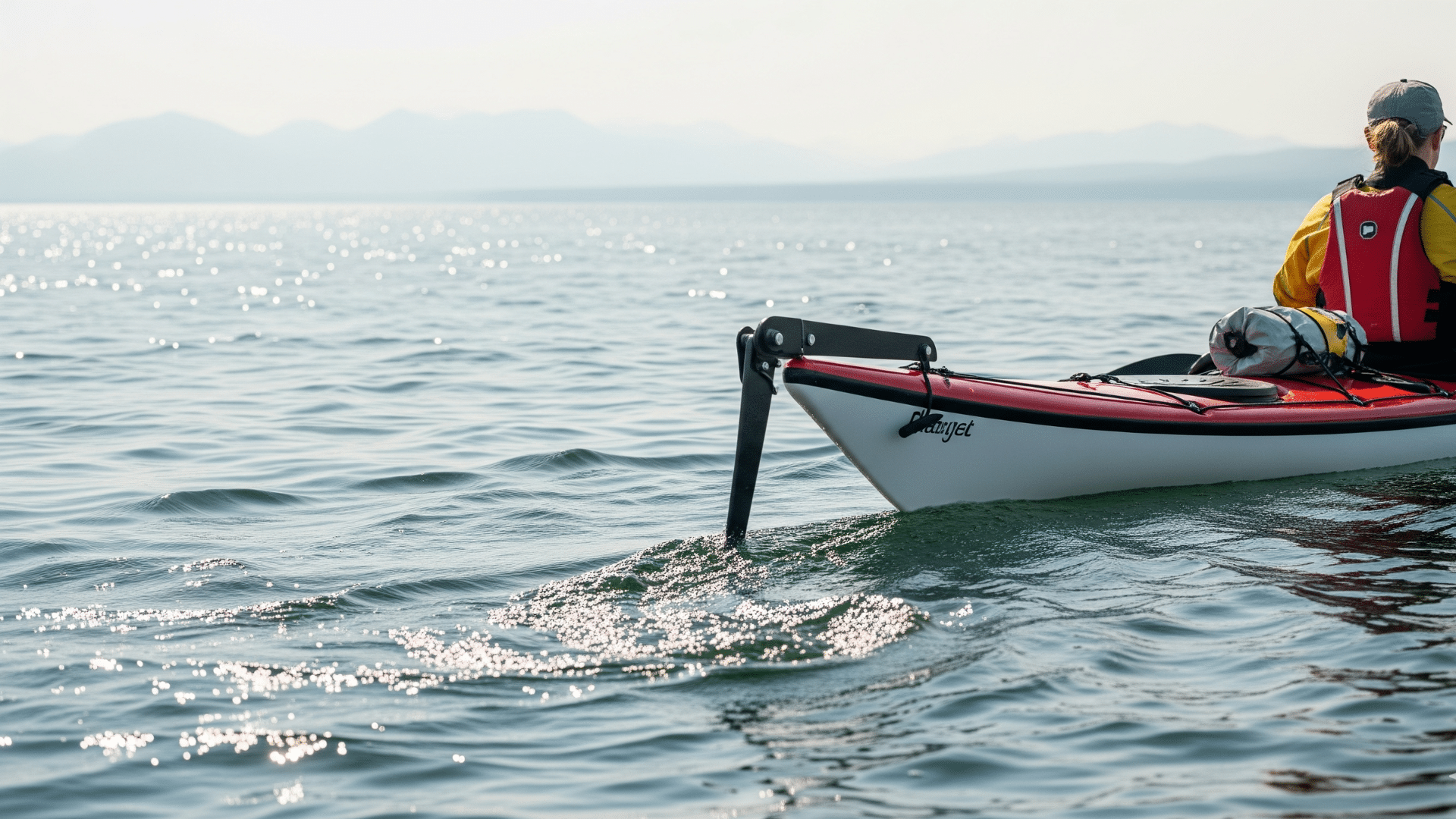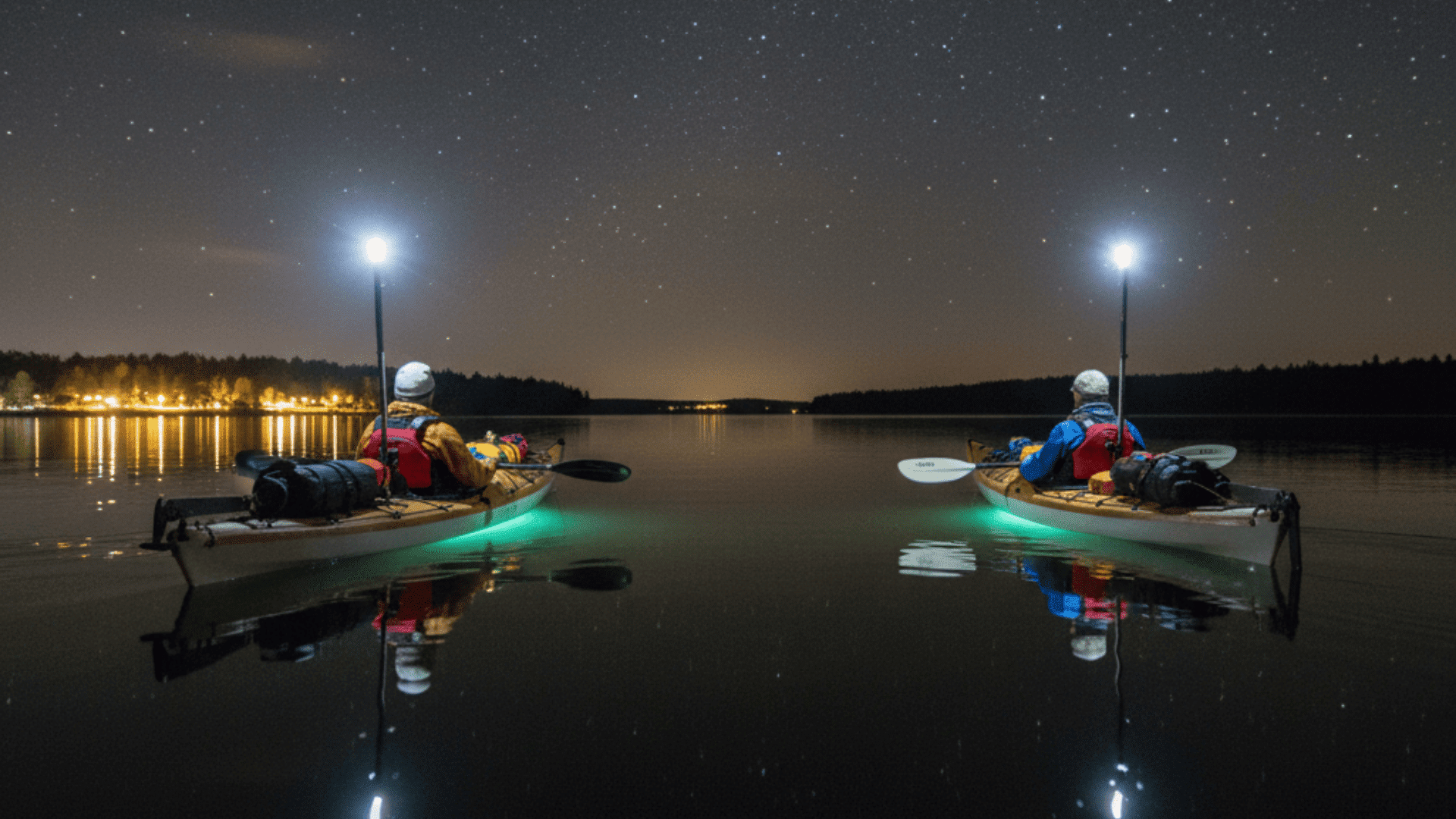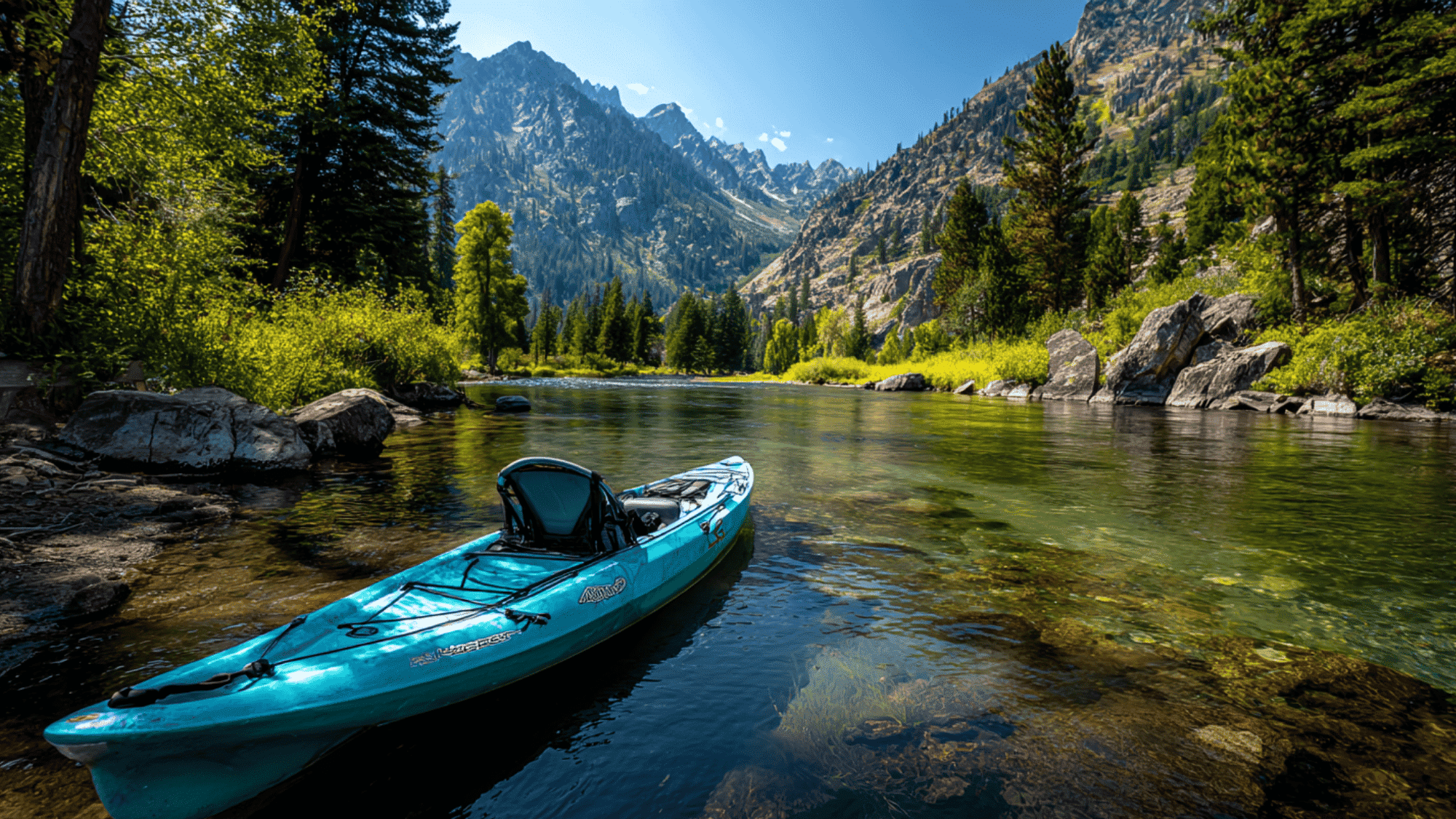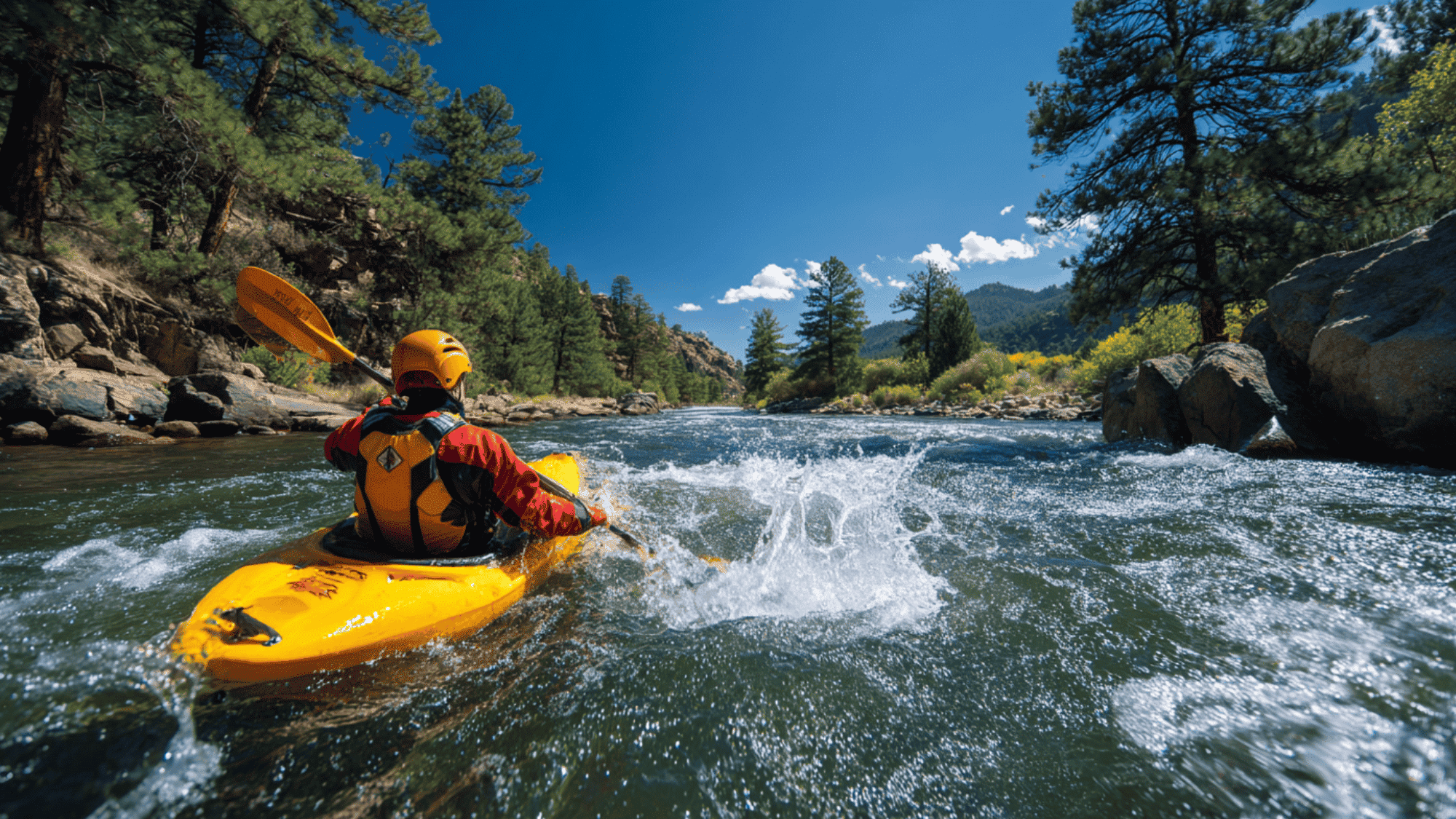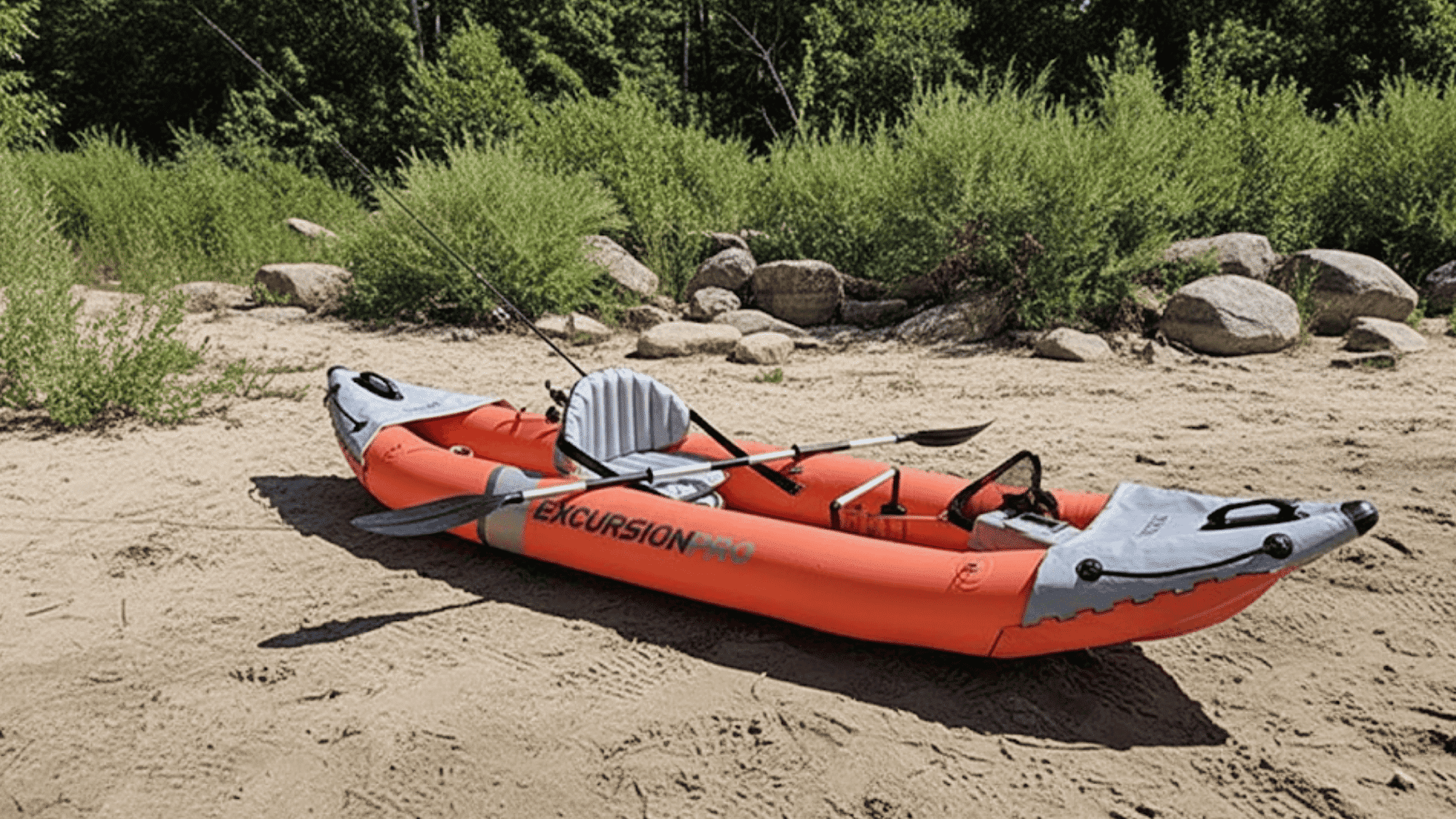Ever found yourself zigzagging across the water on a windy day, fighting to keep your kayak pointed where you want to go?
This frustrating experience happens when wind pushes your stern sideways faster than your bow, creating a phenomenon called weathercocking that turns relaxing paddle trips into exhausting battles against the elements.
A kayak skeg solves this problem by acting as an underwater fin that adds grip to your stern, helping maintain straight-line tracking without constant corrective paddle strokes.
Unlike rudders that steer your kayak, skegs work as tracking aids that complement your paddling technique rather than replacing fundamental skills, making them valuable tools for both beginners and experienced paddlers facing challenging wind conditions.
What is a Kayak Skeg?
A kayak skeg is a fin positioned near the stern that helps maintain straight-line tracking by changing your kayak’s center of lateral resistance.
Most modern skegs are retractable, controlled by a slider in your cockpit that allows you to deploy varying amounts of the fin depending on conditions.
When deployed, the skeg acts like an underwater sail that grips the water and resists sideways movement.
This prevents weathercocking – the tendency for your kayak’s bow to turn into the wind while the stern gets pushed downwind.
By adding resistance at the back of your kayak, a skeg helps balance the forces acting on your hull and keeps you tracking straight with less corrective paddling.
Skeg vs Rudder: What’s the Difference?
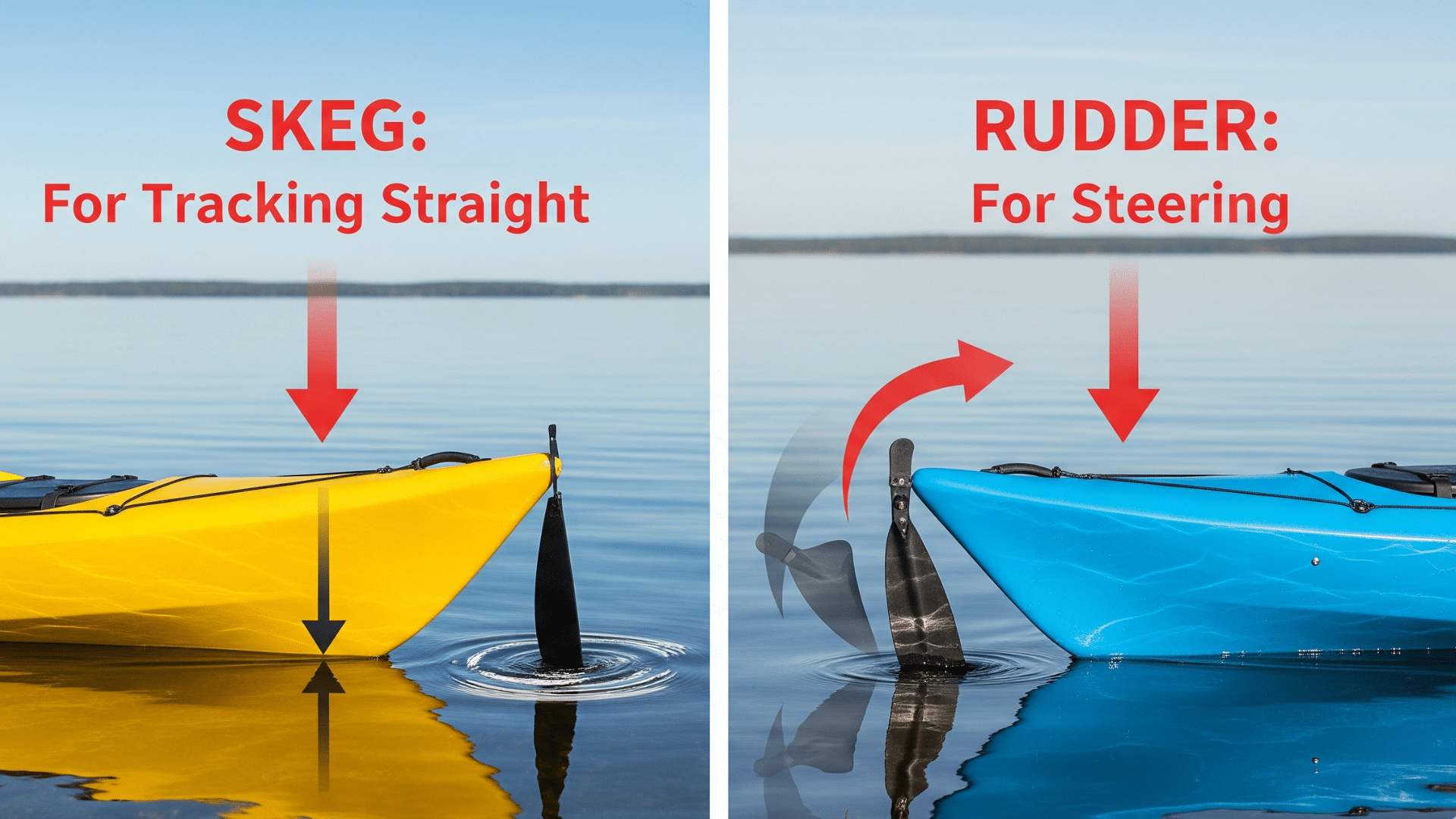
While both skegs and rudders help with tracking, they function differently and serve distinct purposes on the water.
| Feature | Skeg | Rudder |
|---|---|---|
| Primary Purpose | Tracking stability, weathercocking prevention | Active steering plus tracking assistance |
| Movement | Deploys straight down, no side-to-side motion | Pivots left and right for directional control |
| Control | Simple cockpit slider for deployment depth | Foot pedals for steering input |
| Complexity | Simple cable system, fewer failure points | More complex with pedals, cables, and pivot points |
| Learning Curve | Intuitive deployment based on conditions | Requires coordination between feet and paddle |
| Surf Landings | Retracts safely out of the way | Can catch waves and cause control issues |
Skegs excel at providing simple, reliable tracking assistance without changing your fundamental paddling technique. Rudders offer more active control but require learning new skills and accepting additional mechanical complexity.
When to Use a Skeg (and How Much to Deploy)
Skegs work best in specific conditions where wind, waves, or current create tracking challenges that proper technique alone can’t efficiently handle.
- Crosswind Quartering: When wind hits your kayak at a 45-degree angle, it creates strong weathercocking tendencies that require constant correction strokes.
- Following Seas: Large waves pushing from behind can cause your stern to slide sideways, making control difficult without skeg assistance.
- Long Open-Water Crossings: Extended exposure to consistent wind conditions where a skeg reduces fatigue by minimizing corrective paddle strokes.
Deployment Guidelines
| Deployment | When to Use | What You’ll Feel |
|---|---|---|
| 0% (Retracted) | Calm conditions, maneuvering | Maximum turning responsiveness |
| 25% | Light crosswinds, gentle current | Slight tracking improvement, still maneuverable |
| 50% | Moderate wind/waves, steady current | Noticeable stability, reduced weathercocking |
| 75% | Strong conditions, heavy quartering winds | Maximum tracking, reduced turning ability |
Start with minimal deployment and increase gradually until you feel the kayak tracking straight without fighting the paddle.
Remember that skegs assist your technique – they don’t replace proper edging, sweep strokes, or weight distribution.
Types of Kayak Skegs
Understanding different skeg designs helps you choose the right option for your kayak and paddling conditions.
1. Fixed Skegs
Fixed skegs provide simple, reliable tracking assistance without mechanical complexity.
They’re permanently attached to your hull, typically made from durable nylon or composite materials that handle impacts well.
While always deployed, they reduce maneuverability in tight spaces but work consistently in all conditions without adjustment.
2. Retractable Skegs
Retractable systems use cable mechanisms to deploy variable amounts of skeg through a cockpit-mounted slider control.
The skeg blade retracts into a protective box built into the hull, keeping it safe during transport and shallow water paddling.
These systems offer adjustable deployment for changing conditions but require maintenance and can jam or break.
Do You Need a Skeg?
Whether you need a skeg depends on your kayak design, typical paddling conditions, and personal preferences for handling challenging weather.
- Sea and Touring Kayaks: Longer kayaks with narrow beams often benefit from skegs, especially when loaded with gear that affects trim and tracking characteristics.
- Recreational Kayaks: Short, wide recreational kayaks typically track adequately without skegs due to their stable, forgiving designs.
- Wind Exposure: If you regularly paddle on large lakes, coastal waters, or open areas with consistent wind, a skeg provides valuable tracking assistance. Paddlers who stick to rivers, small lakes, or sheltered bays may find skegs unnecessary.
Skeg Installation, Care, and Effective Use
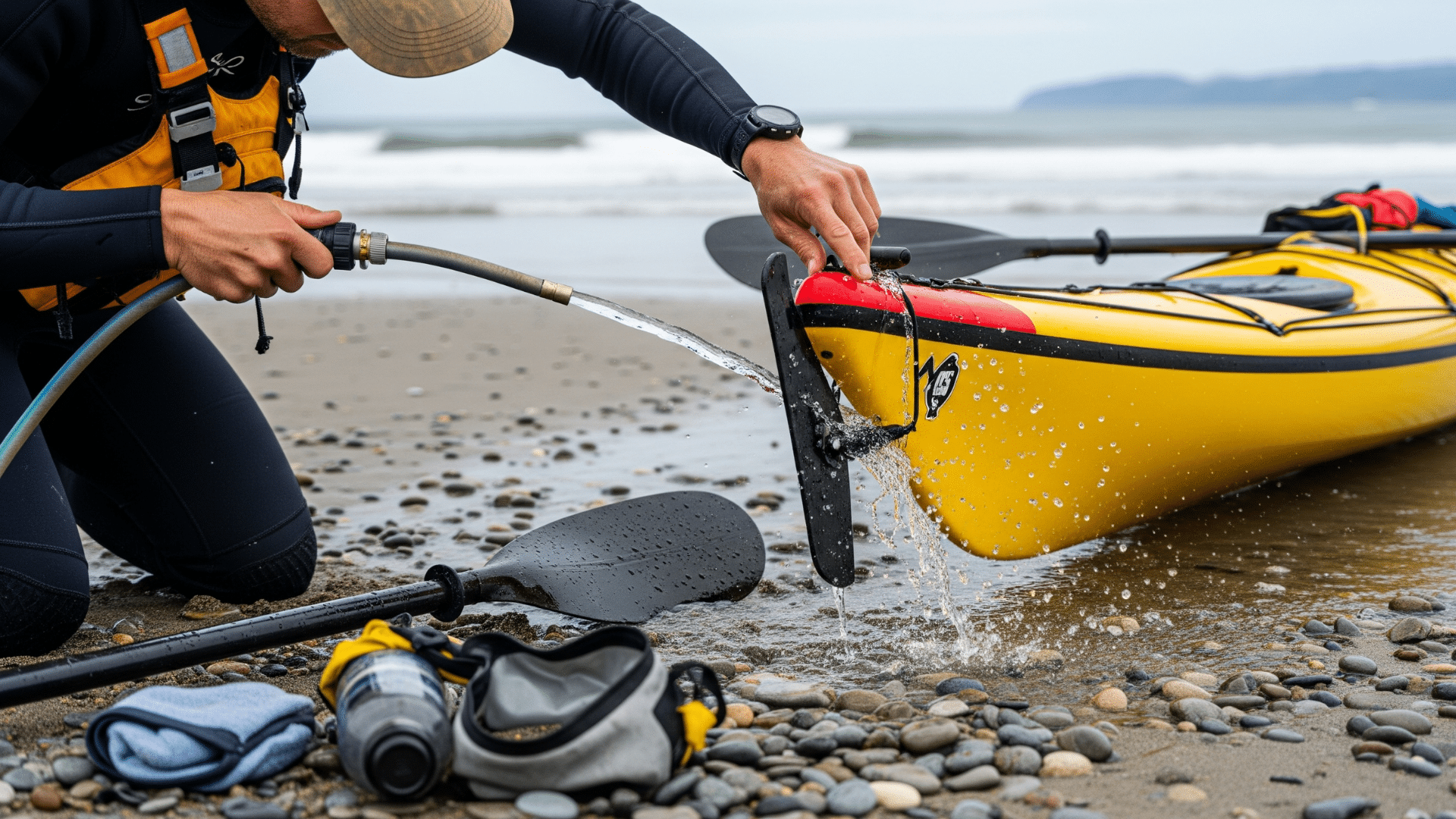
Successfully adding a skeg to your kayak and maintaining it properly ensures reliable performance when conditions demand tracking assistance.
Combining proper installation with regular maintenance and skillful deployment creates a system that enhances your paddling rather than becoming a source of frustration or failure.
1. Installation and Aftermarket Options
Adding a skeg to an existing kayak is possible with various aftermarket solutions. Simple glue-on fins attach directly to your hull using marine adhesives and work well on most hull materials.
Full retractable systems require significant modification, including cutting hull openings, installing skeg boxes, and routing cables, typically requiring professional installation.
2. Maintenance and Troubleshooting
Keeping your skeg system functioning properly requires regular inspection and occasional maintenance, especially for retractable systems.
- Common Issues: Small stones or sand can jam retractable skegs. Try gentle manipulation of the control slider while flexing the kayak hull slightly to dislodge debris. Control cables can develop kinks that prevent smooth operation – inspect and lubricate with marine-grade cable lubricant.
- Preventive Care: Rinse your skeg system with fresh water after every saltwater session. Periodically inspect cables for wear, corrosion, or damage, and carry spare parts for extended expeditions.
3. Using Skegs Effectively
A skeg works best when integrated with proper paddling technique rather than used as a substitute for fundamental skills. Master edging, sweep strokes, and proper weight distribution first.
Practice in gradually increasing wind conditions, learning to combine skeg use with proper technique rather than relying on the skeg alone.
The Bottom Line on Kayak Skegs
Use proper paddling technique first, then deploy your skeg to save energy and maintain your intended course when wind, waves, or current create tracking challenges that technique alone can’t efficiently handle.
A well-chosen skeg system enhances your paddling experience by reducing fatigue and improving control, but it works best as part of a complete skill set rather than a replacement for fundamental technique.
Do you paddle with a skeg system? Share your experiences with different types and deployment strategies in the comments below!
Frequently Asked Questions
Can Beginners Use A Skeg Effectively?
Yes, skegs are intuitive to use – simply deploy more when conditions get challenging and retract when you need maneuverability.
Should I Keep The Skeg Down During Surf Landings?
No, retract your skeg before approaching shore to prevent damage from sand and rocks or getting caught in breaking waves.
Will A Skeg Slow Down My Kayak?
Minimal deployment creates negligible drag, while improved efficiency from better tracking often results in faster overall speeds.
Skeg Or Rudder For Fishing Kayaks?
Skegs work well for fishing since they don’t interfere with standing or casting, while rudders can complicate fishing line management.


